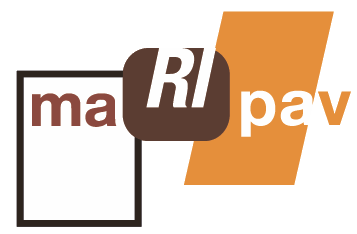Combine historical data, your current budget, and your actuals for the year-to-date to ensure your budget is on track, allowing you to change course as needed throughout the year. Your overhead costs will be the number one obstacle http://www.xserver.ru/computer/nets/cisco/1/28.shtml to achieving your goals, so you must remain pragmatic about them. Expenses are a necessary part of running a nonprofit, but you need to ensure they remain low or donors will be less likely to support your organization.
Nonprofit Accounting Statements and Reports
- For larger organizations with gross receipts exceeding $1,208,500, the penalty increases to $120 per day, with a maximum penalty of $60,000.
- For example, what percentage of your postage needs are for marketing materials and direct mail fundraising versus administrative duties like paying bills.
- QuickBooks records donations accurately, making it easy to provide donors with the necessary documentation for tax purposes.
- Key nonprofit budgeting factors include operational expenses such as salaries, rent, utilities, and other overheads.
- Incorporating these nonprofit accounting best practices, your nonprofit can establish trust with its stakeholders, and ensure the effective and ethical use of the resources granted your charity in support of your mission.
This is the document that most represents the financial health of your nonprofit. Nonprofits should involve key stakeholders in the budgeting process, including board members and program managers. QuickBooks’ budgeting feature allows you to create detailed budgets for different funds and programs. DonorPerfect’s fundraising projections can be integrated into the budgeting process to estimate revenue streams accurately. Differentiating program expenses from overhead costs is essential for transparency.
Ethics and Transparency
These yearly budget documents will never need to be submitted to a governmental agency or even be made available to the public, however they are a very important aspect of running a nonprofit successfully. Without these yearly projections, it’s extremely difficult to understand what needs to be done during the year in order to meet your organization’s http://www.greensboring.com/2017/01/food-lion-saying-one-thing-and-doing.html financial obligations. Check in with your budget regularly, preferably bi-weekly or monthly, comparing your budgeted revenue and expenses against your actual income and expenses. In a nutshell, overhead expenses are the expenses nonprofits have to pay for anything that isn’t directly related to the organization’s mission.
Picking An Accounting Method
Accurate and timely recognition of revenue sources, as well as thorough documentation of fundraising efforts and donations, ensures financial transparency and compliance with accounting standards. In the nonprofit sector, revenue management involves tracking and reporting on various sources of income. These sources can include fundraising campaigns, donations, grants, and contributions.
Financial Management Overview for Nonprofit Leaders
- Generally accepted accounting principles (GAAP) are a set of accounting procedures and standards issued by the Financial Accounting Standards Board (FASB).
- It provides detailed information on where resources have been allocated within the organization.
- We recommend doing a bank reconciliation at least once a month to make sure your books are up to date and accurate, to help track cash flow, to prevent fraud and to detect bank errors.
- Essentially, this statement will organize and categorize your expenses and revenue sources.
- By leveraging online accounting solutions, you can streamline tasks like bookkeeping and reporting, freeing up valuable time and resources for your staff and volunteers to focus on your mission-critical activities.
Additionally, many banks offer business checking accounts specifically designed for nonprofits, often with waived fees or reduced transaction costs. These tailored accounts can provide valuable features, such as multiple signatories, online banking tools, and interest-bearing options, further supporting your nonprofit’s financial management needs. Its ease of use makes it perfect for organizations that want to jump right in and spend little time on training. Essentially, this statement will organize and categorize your expenses and revenue sources.
By automating expense management, nonprofits can save time, reduce errors, and improve compliance with donor regulations. While smaller nonprofits can use cash-based accounting, which need not be GAAP-compliant, most nonprofits must be GAAP-compliant to be eligible for various grants and funding sources. A bachelor’s degree in accounting is the standard to become a nonprofit accountant. Most university accounting programs offer a nonprofit accounting course combined with government accounting. Although not required, additional education is usually required if you want a CPA license or other certification, such as a Certified Management Accountant (CMA) or Certified Fraud Examiner (CFE).
Furthermore, when you do file your Form 990, it will require the same types of cost accounting breakdowns you’ve included on your Statement of Functional Expenses. So you can save your accounting team a bit https://www.aksport.ru/index.php?news=off&year=20&paper=on&num=01&script=sc4 of work by making this statement as comprehensive and clear as possible. This spending is recorded in the nonprofit’s Statement of Activities which shows where the money comes from and how it’s used.
